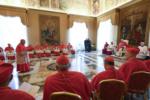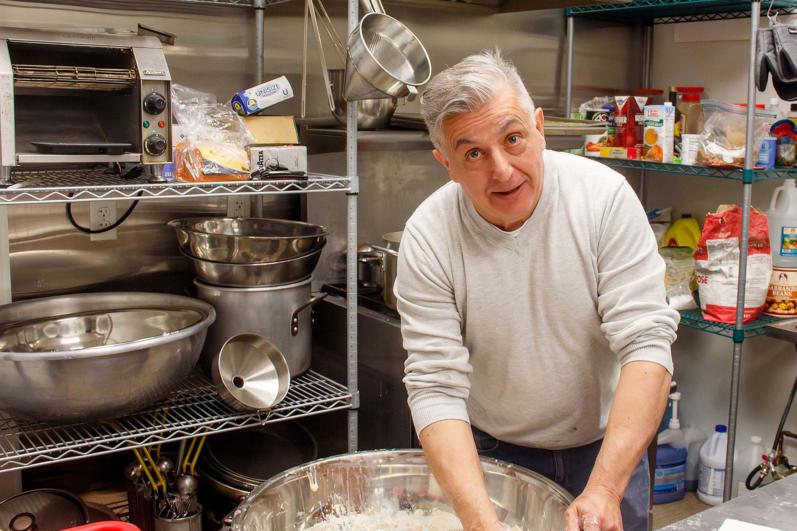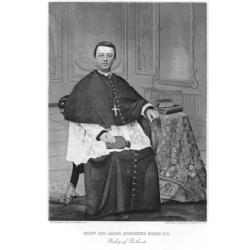Lenten crispelli help preserve Italian tradition in Lawrence
LAWRENCE -- "Like setting off an atomic bomb."
That's how John Capriole described the reaction to the suggestion that there would be no crispelli at this year's feast of the Three Saints in Lawrence. The fried dough pockets with a savory filling have been a staple in northwestern Sicily for millennia.
When Sicilian immigrants came to Lawrence in the late 19th and early 20th centuries, they brought with them crispelli, along with their devotion to Sts. Alfio, Filadelfo, and Cirino. Since then, crispelli have been synonymous with the saints and their annual feast. The idea of a feast without them was nothing short of sacrilege.
"So we say, 'No, we got to have them, absolutely,'" Capriole told The Pilot on March 28.
Volunteers with the St. Alfio Society, headquartered in Lawrence next to the Holy Rosary Shrine, make the crispelli every year. An estimated 80,000 crispelli will be rolled, fried, and served at this year's feast. In the meantime, a new crop of volunteers must be trained in the subtle art of making them.
"We can't wait until a week before to show them," Capriole said.
The St. Alfio Society has been making and selling crispelli every Friday during Lent as a sort of test run for the feast, which takes place this Labor Day.
On their best Friday so far, the society made 1,000 crispelli in a single day.
"We thought Lent would be a great time because people come to the church to say the rosary, novenas, or whatever," Capriole said.
Crispelli, meatless dishes that aren't the size of a full meal but still filling, are tailor-made for Lent. They are also a symbol of Lawrence's Italian heritage.
"There was a time where everybody's mother, grandmother used to make them at home, and that slowly went away," Capriole said.
Crispelli were a cheap but hearty meal for the working-class immigrants who toiled in Lawrence's mills.
"It's a tradition that started way before we got here," Orazio Garozzo told The Pilot. "And it brings us back to our roots, Sicilian roots, and it brings us back to a time when we feel that life was simpler."
The crispelli recipe used by the St. Alfio Society was passed down to Garozzo's family in the 1950s. Every batch of crispelli starts in the society's small kitchen with two ounces of fresh yeast, added with water to a mixture of sugar, salt, and baking powder.
"It's going to do its little thing with the yeast," Garozzo explained. "Gonna dance a little."
Flour is then added to the mixture.
"The secret to mixing the crispelli dough: the cross," Garozzo said as he made a cross-shaped indentation through the dough. "It's Lent, and this is the secret."
His hands quickly became caked in flour as he kneaded the dough by hand and gave orders to his fellow bakers in both English and Italian. A haze of flour dust rose from the dough to his forearms. Craggy clumps of dough stuck to his fingers. The dough must be free of all knots.
"It's just like when you comb the kids' hair when they were little," he said.
However, he must be careful not to "stress out," "choke," or "kill" the dough during mixing.
"This is the secret," he said. "You grab it, and you paddle. And you paddle just like you were rowing a boat."
The dough is left to sit for 35 to 40 minutes, then sent outside to be filled, rolled up, and fried.
Ruth Messina filled the crispelli with ricotta and anchovies before plopping them into the fryer with assembly-line precision. She has been making crispelli for 55 years and called them her livelihood.
"Everything is mixed by hand, so you need to have the feel of it," she said.
Messina and her husband, Peter, operated Italian Kitchen in Lawrence from 1969 to 2017. Before it closed, it was thought to be the only restaurant in the U.S. with crispelli on the menu. Peter died in 2024 at age 80. Ruth said "it's bittersweet" to make crispelli without her husband but making them is a way to honor his memory.
"Pete was a tradition," St. Alfio Society President Tony Palmisano told The Pilot. "He was a tradition. And it's a tradition for our feast, because where we come from in Italy, Trecastagni, where this feast is from. This is a classic feast food, street food in Italy, that Pete and his grandfather and his father brought over when they came from Trecastagni."
Crispelli dough is fried twice, first in 300-degree oil to cook the inside. Once the dough is "the color of a Chinese chicken finger" (Palmisano's description), it is dunked in 360-degree oil to give the outside a golden-brown finish. This keeps the crispelli crispy while the inside remains pillowy soft.
"They're perfect," Palmisano said.
He hopes that crispelli will become an annual tradition during Lent.
"To do something that was done before me is an honor, okay?" said Garozzo, who came to the U.S. from Sicily in 1968. "To continue a tradition is another honor. To give somebody a good product is the best. So for us, it's more than just making dough."



















